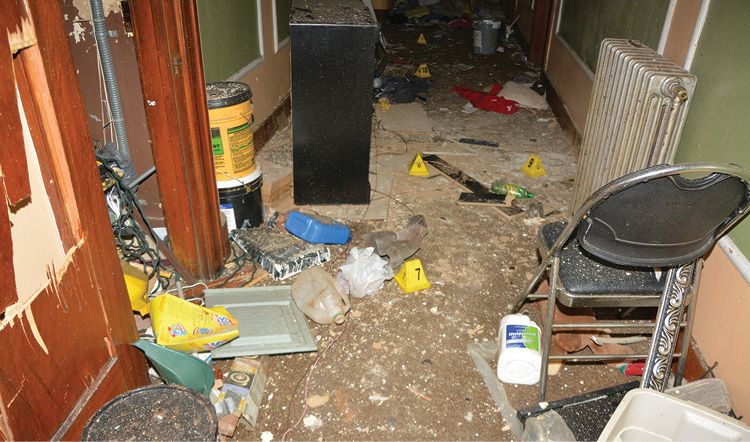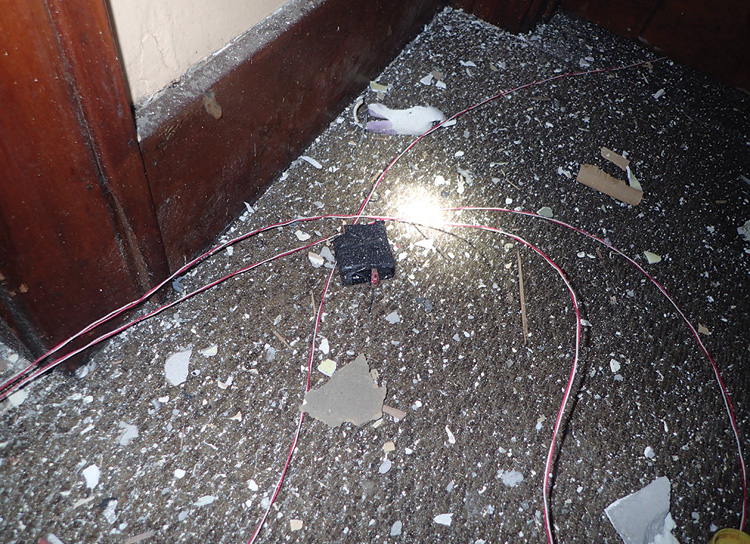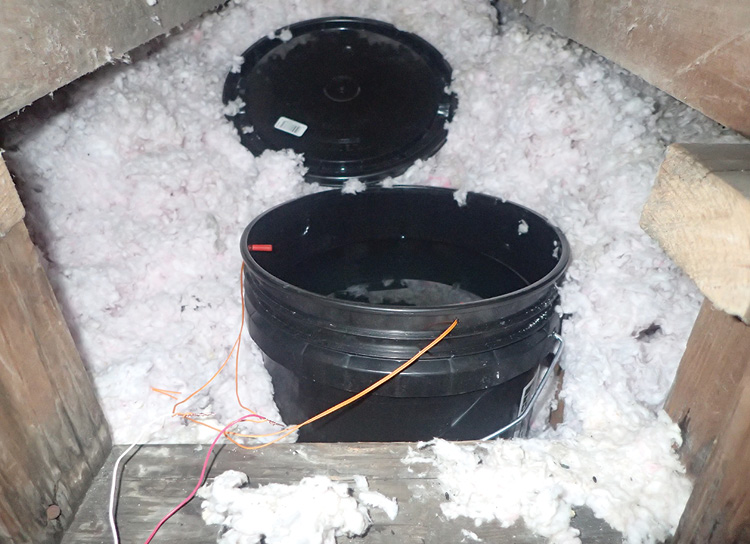
WHAT WE LEARNED ❘ By Patrick Agostinelli
Members of the fire service frequently discuss the importance of staying alert and avoiding apathy while on duty, particularly when responding to the same type of call hundreds or even thousands of times during the year. The Rochester (NY) Fire Department (RFD) responds to more than 3,000 fume-related calls annually, many of which turn out to be minor natural gas or gasoline leaks that are quickly mitigated. On a warm spring evening in 2017, however, the RFD was sent to one such call that turned out to be anything but routine. The incident could have ended badly if the personnel involved were not paying close attention to their surroundings.
On the night shift of May 17, 2017, a civilian walked up to Engine 10’s firehouse at approximately 1715 hours and reported a strong odor of gasoline coming from an apartment building at 401 Ridgeway Avenue, on the city’s west side. This address is just a few buildings west of the firehouse, which also houses Truck 2 and the department’s two fire investigation response units. The surrounding neighborhood is densely populated with large 2½-story single-family and multifamily wood-frame houses built a driveway’s width from each other in the early 1900s.
Arrival on Scene
At the time of the incident, the two-story brick apartment building was unoccupied and fairly well secured. Engine 10 responded to the scene and walked around the building’s exterior to investigate. Multiple bags of trash were stacked along the Bravo side, and it was evident from the outside that the building was not being maintained. Since the building was secured, personnel were unable to use the exterior doors for entry.
![An external view of the Ridgeway Avenue structure. [Photos courtesy of Doug Kress, fire investigator, Rochester (NY) Fire Department.]](https://emberly.fireengineering.com/wp-content/uploads/2019/07/1907FE_WhatWeLearned_p01.jpg)
(1) An external view of the Ridgeway Avenue structure. [Photos courtesy of Doug Kress, fire investigator, Rochester (NY) Fire Department.]

(2) Wires in the hallway.
Detecting a strong odor of gasoline on the outside of the building and considering that the department responded to this property for a significant natural gas incident in the recent past, the engine lieutenant requested a battalion chief to the scene for assistance. Battalion One arrived and, confirming the strong odor outside, determined that forcible entry would be justified to investigate and find the source.
To minimize damage, the lieutenant and two firefighters entered the building by way of a ground ladder through an unsecured second-floor window on the Charlie side. Wearing full personal protective equipment and self-contained breathing apparatus (SCBA), they walked through a second-floor bedroom and into the hallway. There, they encountered a variety of trash, debris, and old furniture, which was not out of the ordinary for a vacant structure of this type.
RELATED
Hazmat Survival Tips: Terrorism, Sabotage, and Accidents — Is There a Difference?
Vehicle-Borne Improvised Explosive Devices: Planning and Response
Situational Awareness for the Modern Responder
As they moved down the hallway, they noticed multiple thin wires strung along the hallway floor and over doorways. The walls and floor had also been heavily damaged and breached in several locations. One of the crew members, a former member of the department’s fire investigation unit, drew on the experience he gained while working in that capacity. He followed the wires up the stairs to the roof access, where he found two five-gallon buckets in the open cockloft space. Each was nearly full of gasoline, and wired ignition devices were installed above the liquid line. When he and his fellow firefighters realized what they were looking at, they immediately exited the building and informed the battalion chief of their findings.

(3) Wires and a power supply.

(4) A bucket with gasoline in the cockloft.
A Dramatic Turn of Events
At that point, it became clear on multiple fronts that the building had been intentionally set up for a fire. The tone of the operation changed dramatically. The engine was repositioned for a substantial water supply, and Battalion One began preparations for an extended incident. He established command away from the front of the building and requested the following additional resources:
- A truck company to set up off the corner of the building and use its aerial to size up the roof if a fire occurred and look for additional improvised explosive devices on the roof.
- A fire investigation response to begin documenting the incident. Because of the nature of the findings, the city’s Arson Task Force was also dispatched.
- Units from the Rochester Police Department (RPD) to stop all traffic on Ridgeway Avenue and assist with evacuating adjacent homes. The city’s Emergency Communications Department used its Hyper-Reach system to notify neighborhood residents by telephone to stay inside their homes for their safety. Nearby homes on all four sides were evacuated.
- The RPD’s bomb squad to begin documenting the scene and making preparations to disarm and remove evidence from the building. The preparations included the use of the RPD bomb squad’s mobile robot.
- The RFD’s hazardous materials response team to set up air-sampling equipment at various locations and begin preparations for collecting and properly disposing of any hazardous materials removed from the building.
- Rochester Gas and Electric crews to ensure that the building’s gas and electric services were disconnected.
- The RFD’s Salvage and Support Unit for scene lighting and SCBA support.
- The RFD’s public information officer to manage the news media gathering near the scene.
- The RFD’s on-call fire safety officer to assist with developing a building history and making necessary contacts with the building owner.
- A transit bus to stage up the block for residents displaced from their homes. This bus initially housed a number of residents who were evacuated from their homes. Once those residents made other arrangements for a place to stay, they left the bus, and it was released from the scene.
- Two ambulances to stage near the scene.
- An additional engine and truck to stage near the scene.
As all of these resources fell into place, the RPD and RFD worked cooperatively to determine a course of action, carefully document the scene, and systematically remove the hazards from the building. The RFD provided fire protection through two charged hoselines stretched to each end of the building, various forms of atmospheric monitoring, and rescue preparations for bomb squad personnel as they made multiple entries over a 10-hour period to investigate conditions and remove multiple explosive devices from the building.
At the time of the incident, the building had a history of problems including recently evicted tenants, recent vandalism, apparent sabotage attempts, and complaints against it for code violations. It was later determined that the RFD had responded to the building five times during the three months prior to this incident and that all five of those incidents involved gasoline or natural gas odors. One of the incidents involved a building occupant who was later found to have a history of threatening first responders.
The incident was turned over to the RPD once RFD personnel confirmed that the fumes were sufficiently mitigated. The RPD found an extensive system of wires and battery packs, a severely damaged liquid propane tank, various explosive devices, four five-gallon buckets partially filled with gasoline, and a kitchen timer. The RFD’s hazardous materials response team secured 42 gallons of gasoline in a sealed drum for disposal by a contractor obtained through Rochester’s Special Services Department.
Lessons Learned and Reinforced
Rotation of members. Because this incident lasted more than 10 hours, fire companies had to be rotated throughout the night to allow personnel to eat and use the restroom.
RFD and RPD collaboration. Communication and collaboration between these two departments are essential in a situation of this nature. Command officers from each department were in frequent contact so both sides were regularly updated on their respective operational needs and progress.
Weather. It was not a factor. Had there been rain or snow, we would have had to provide temporary sheltering for the staged evidence removed from the building.
Gasoline precautions. Containment of raw gasoline outside the building required multiple grounding and bonding precautions to prevent ignition as the product was moved from container to container.
Scene preservation. This is critical. No fire department wants to be responsible for damaging law enforcement’s case against a perpetrator. At this incident, the property owner had assembled a system of explosive devices that jeopardized the lives of emergency responders. All of the personnel at this incident had an obligation to preserve evidence that might lead to a conviction.
Confirmation of bad intent. A damaged liquefied petroleum cylinder was found inside the building. It was later proposed that it was likely the remnant of a failed activation attempt that occurred two days before this incident. Personnel from the nearby firehouse remembered hearing a loud noise at that time, but no calls were received, and it was dismissed as a firework.
Knowledge of district. Know the buildings in your district. This building had a fairly recent series of suspicious incidents; this information guided us in the approach to this situation. Awareness of a building’s history may help you save lives and property.
Be alert to those on scene. It was determined that the building owner set up the devices. He showed up at the scene and spoke with command officers. You never know who may show up at your command post.
PATRICK AGOSTINELLI is a 22-year veteran of and a battalion chief with the Rochester (NY) Fire Department and a 33-year veteran of the fire service. He began his career as a volunteer firefighter in Spencerport, New York, and worked in various fire protection roles for the Eastman Kodak Company, the Mobil Oil Corporation, the Apple Valley (CA) Fire Protection District, Arco Alaska, and IFSTA/Fire Protection Publications. He has an A.A.S. degree in fire protection technology from Monroe Community College and a B.S. degree in technical education/fire protection and occupational safety from Oklahoma State University.

